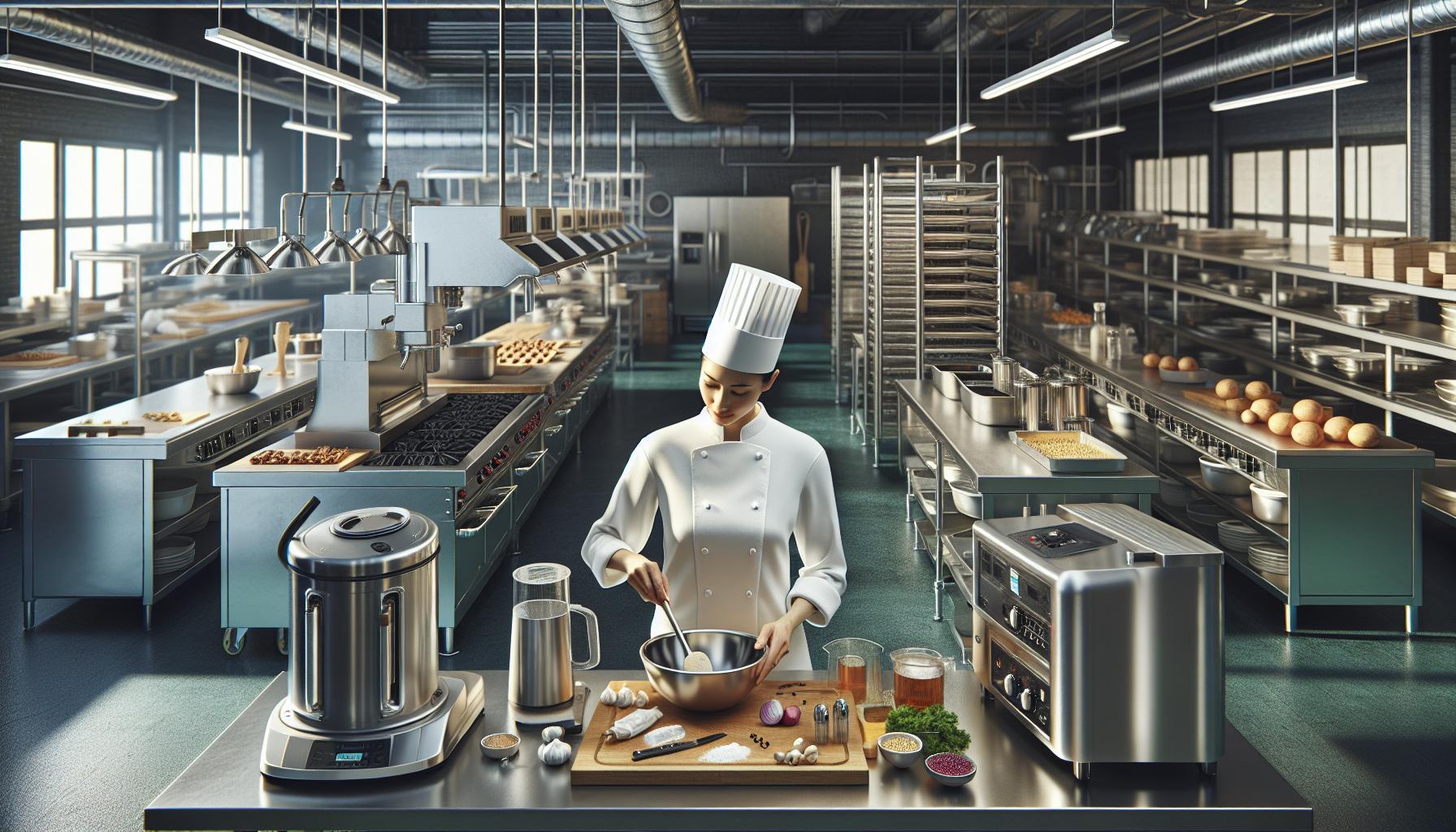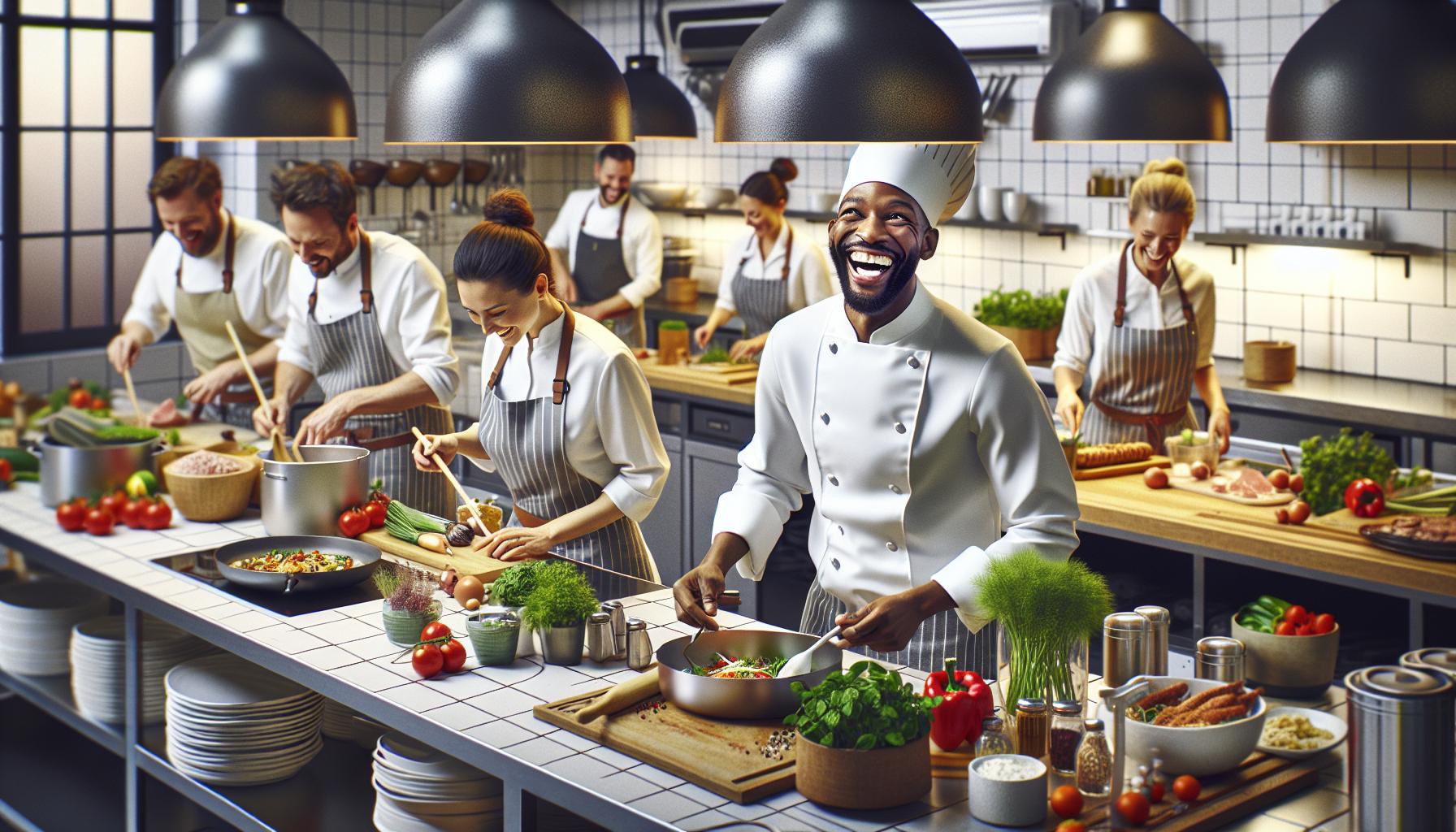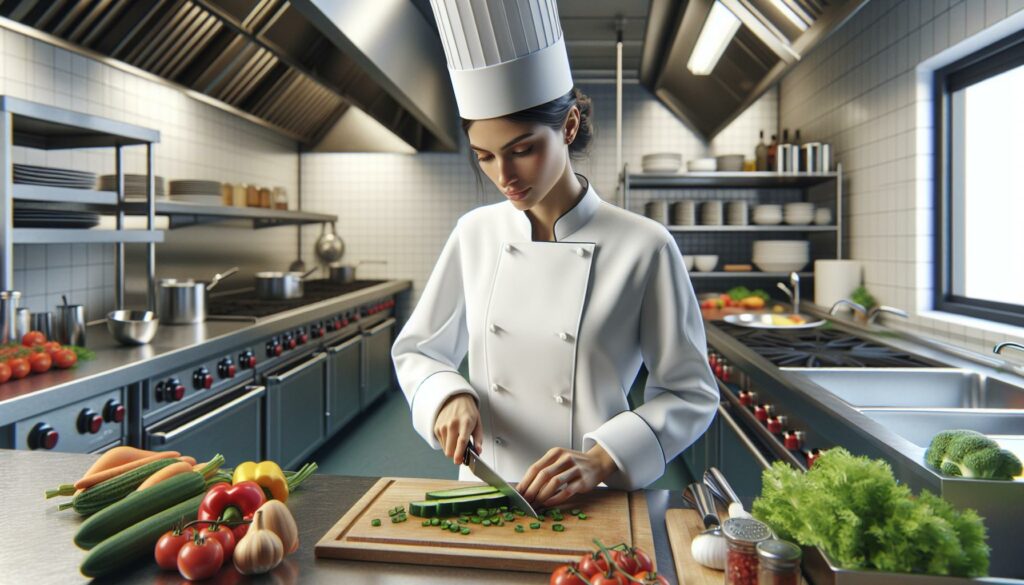Running a successful restaurant takes more than just knowing how to whip up a delicious meal. The foundations of restaurant management and culinary arts blend the artistry of cooking with essential business acumen to create unforgettable dining experiences.
From mastering knife skills to understanding profit margins, aspiring restaurateurs must navigate a complex world where both food quality and operational efficiency reign supreme. Today’s culinary professionals need a solid grasp of kitchen operations, food safety regulations, and customer service excellence to thrive in this dynamic industry. After all, a restaurant’s success depends on much more than what’s on the plate – it’s about creating an orchestrated symphony of flavors, service, and smart business decisions.
Restaurant Management & Culinary Arts
Restaurant management and culinary arts trace their roots to ancient civilizations while continuously adapting to modern innovations. This dynamic field integrates traditional cooking methods with contemporary business practices.
Historical Foundations and Modern Practices
The restaurant industry evolved from simple inns and taverns in 15th century Europe to sophisticated dining establishments by the 18th century. French chef Georges Auguste Escoffier established the brigade system in the 1880s, creating specialized kitchen roles like sous chef, saucier and patissier. Modern practices incorporate technology through point-of-sale systems, inventory management software and online reservation platforms. Digital innovations streamline operations while preserving classical cooking techniques. Restaurant management now emphasizes data analytics for menu engineering, labor scheduling and financial forecasting.
Industry Standards and Best Practices
Professional kitchens follow standardized practices established by organizations like the National Restaurant Association and American Culinary Federation. These standards encompass food safety protocols, equipment maintenance procedures and staff certification requirements. Leading restaurants implement sustainable practices including local sourcing, waste reduction and energy-efficient equipment. Quality control measures incorporate standardized recipes, portion control guidelines and regular staff training programs. Modern establishments prioritize cross-training staff roles, implementing preventive maintenance schedules and maintaining detailed documentation systems for compliance and consistency.
Essential Restaurant Operations

Successful restaurant operations integrate multiple systems to create seamless service delivery. Each operational component requires specific protocols to maintain efficiency standards.
Front of House Management
Front of house operations focus on customer interactions through organized service systems. Hosts manage reservations through digital platforms while coordinating with servers to optimize table turnover rates. Service staff utilize point-of-sale systems to process orders accurately transmitting them directly to kitchen displays. Floor plans organize seating sections into manageable zones enabling servers to maintain consistent service levels for 4-6 tables simultaneously. Communication protocols establish clear channels between service staff managers kitchen teams to resolve guest concerns immediately.
Back of House Systems
Kitchen operations follow established workflows to maximize production efficiency. Line cooks organize mise en place stations with labeled ingredients prepped during morning shifts. Standardized recipe cards ensure consistent portion controls while digital Kitchen Display Systems track order completion times. Storage areas maintain FIFO (First In First Out) rotation systems with clear labeling dates temperatures. Equipment maintenance schedules prevent operational disruptions through regular cleaning calibration checks of cooking surfaces refrigeration units ventilation systems.
| Control Point | Frequency | Temperature Range |
|---|---|---|
| Receiving | Each delivery | 35-41°F cold items |
| Storage | Every 4 hours | Below 41°F cold holds |
| Service | Before plating | 165°F hot items |
Core Culinary Principles and Techniques

Core culinary principles establish the foundation for professional food preparation techniques, equipment usage, and presentation standards. These principles guide chefs in creating consistent, high-quality dishes while maintaining efficient kitchen operations.
Kitchen Equipment and Tools
Professional kitchens utilize specialized equipment categories for specific cooking functions. Commercial ranges accommodate multiple cooking methods simultaneously, featuring 6-8 burners, flat-top grills, and convection ovens. Food processors, stand mixers, and immersion blenders enhance preparation efficiency for large-volume production. Essential hand tools include chef’s knives, paring knives, mandolins, thermometers, and measuring devices for precise ingredient portioning. Storage systems incorporate speed racks, sheet pans, hotel pans, and specialized containers for maintaining ingredient freshness and organization.
Cooking Methods and Recipe Development
Professional cooking methods divide into three primary categories: dry-heat, moist-heat, and combination techniques. Dry-heat methods include roasting, broiling, grilling, and sautéing at temperatures above 300°F. Moist-heat techniques incorporate poaching, steaming, and simmering below 212°F. Recipe development follows standardized procedures: ingredient testing, precise measurements, detailed documentation, and batch scaling capabilities. Kitchen teams execute consistent results through structured prep lists, detailed plating instructions, and specific cooking temperatures.
Food Presentation and Plating
Professional plating elevates dishes through strategic arrangement and visual composition. Color combinations create visual appeal through contrasting or complementary ingredients. Texture variations incorporate height, depth, and negative space to enhance presentation impact. Garnishes serve functional purposes: fresh herbs add flavor, citrus segments provide acidity, and microgreens contribute texture. Plate selection matches food components with appropriate sizes, shapes, and colors to showcase menu items effectively. Service temperature guidelines ensure optimal flavor profiles: hot foods at 140°F, cold items below 40°F.
Business Management Fundamentals

Restaurant management integrates financial planning, staff development, and marketing strategies to create sustainable business operations. Each component contributes to the overall success of the establishment through systematic implementation and monitoring.
Financial Planning and Cost Control
Financial management in restaurants centers on precise budgeting and inventory control systems. Food cost percentages range between 28-35% of revenue in successful establishments, while labor costs typically account for 25-35%. POS systems track daily sales patterns, enabling managers to adjust ordering quantities and reduce waste. Regular financial audits monitor cash flow, accounts payable, and profit margins. Digital inventory management tools calculate ingredient usage rates and automate reorder points. Menu engineering analyzes item profitability by examining food costs against sales volumes.
Staff Training and Development
Employee development programs enhance service quality and operational efficiency. Training modules cover food safety certifications, customer service protocols, and menu knowledge. Cross-training programs enable staff to perform multiple roles, increasing operational flexibility. Performance metrics track server sales averages, customer feedback scores, and food preparation times. Skill assessment tools identify areas for improvement and career advancement opportunities. Regular team meetings facilitate communication and address operational challenges.
Marketing and Customer Service
Digital marketing strategies drive customer engagement and revenue growth. Social media platforms showcase menu items, special events, and behind-the-scenes content. Email marketing campaigns generate 38% higher revenue compared to non-personalized promotions. Online reservation systems streamline guest management and reduce no-shows by 25%. Customer feedback channels include post-dining surveys, review monitoring, and direct response protocols. Loyalty programs track guest preferences and encourage repeat visits through targeted incentives.
Sustainability and Innovation
Modern restaurant operations emphasize sustainable practices that minimize environmental impact while maximizing operational efficiency. Digital solutions enhance kitchen operations, enabling restaurants to reduce waste, optimize resource utilization, and improve service delivery.
Farm-to-Table Practices
Farm-to-table practices connect restaurants directly with local farmers to source fresh, seasonal ingredients. Restaurants partner with community farms to create seasonal menus based on crop availability, reducing transportation emissions by 25-75% compared to traditional supply chains. Digital platforms streamline communication between chefs and farmers, enabling real-time inventory updates and harvest schedules. Local sourcing programs generate 15-30% higher profit margins on menu items through reduced storage costs and premium pricing opportunities. Leading restaurants maintain relationships with 5-10 local producers to ensure consistent supply while supporting regional agricultural sustainability.
Technology Integration in Modern Kitchens
Digital kitchen management systems optimize food preparation workflows and reduce operational costs by 20-35%. Smart appliances monitor cooking temperatures automatically, while inventory management software tracks ingredient usage in real time. Connected POS systems integrate ordering with kitchen display screens, reducing ticket times by 30%. Kitchen automation tools include:
| Technology | Impact |
|---|---|
| Smart Ovens | 15% energy savings |
| Digital Inventory | 40% waste reduction |
| AI Menu Planning | 25% cost optimization |
| IoT Sensors | 20% quality improvement |
Cloud-based recipe management ensures consistency across multiple locations while enabling remote menu updates and training programs.
Efficient Systems and Fostering Strong Team Dynamics
Restaurant management and culinary arts represent a dynamic fusion of creativity business acumen and operational excellence. The field continues to evolve with technological advancements while honoring time-tested culinary traditions. Success in this industry demands a delicate balance of maintaining high food quality implementing efficient systems and fostering strong team dynamics.
Modern restaurant professionals must stay adaptable embracing sustainable practices and innovative solutions while upholding fundamental principles of hospitality. Those who master these foundations will be well-equipped to navigate the challenges and opportunities in today’s competitive dining landscape.

